
GrauPappel (Populus x canescens) Habitus bestimmen GrauPappel
Populus × canescens, the grey poplar, is a hybrid between Populus alba (white poplar) and P. tremula (common aspen). It is intermediate between its parents, with a thin grey downy coating on the leaves, which are much less deeply lobed than the leaves of P. alba.
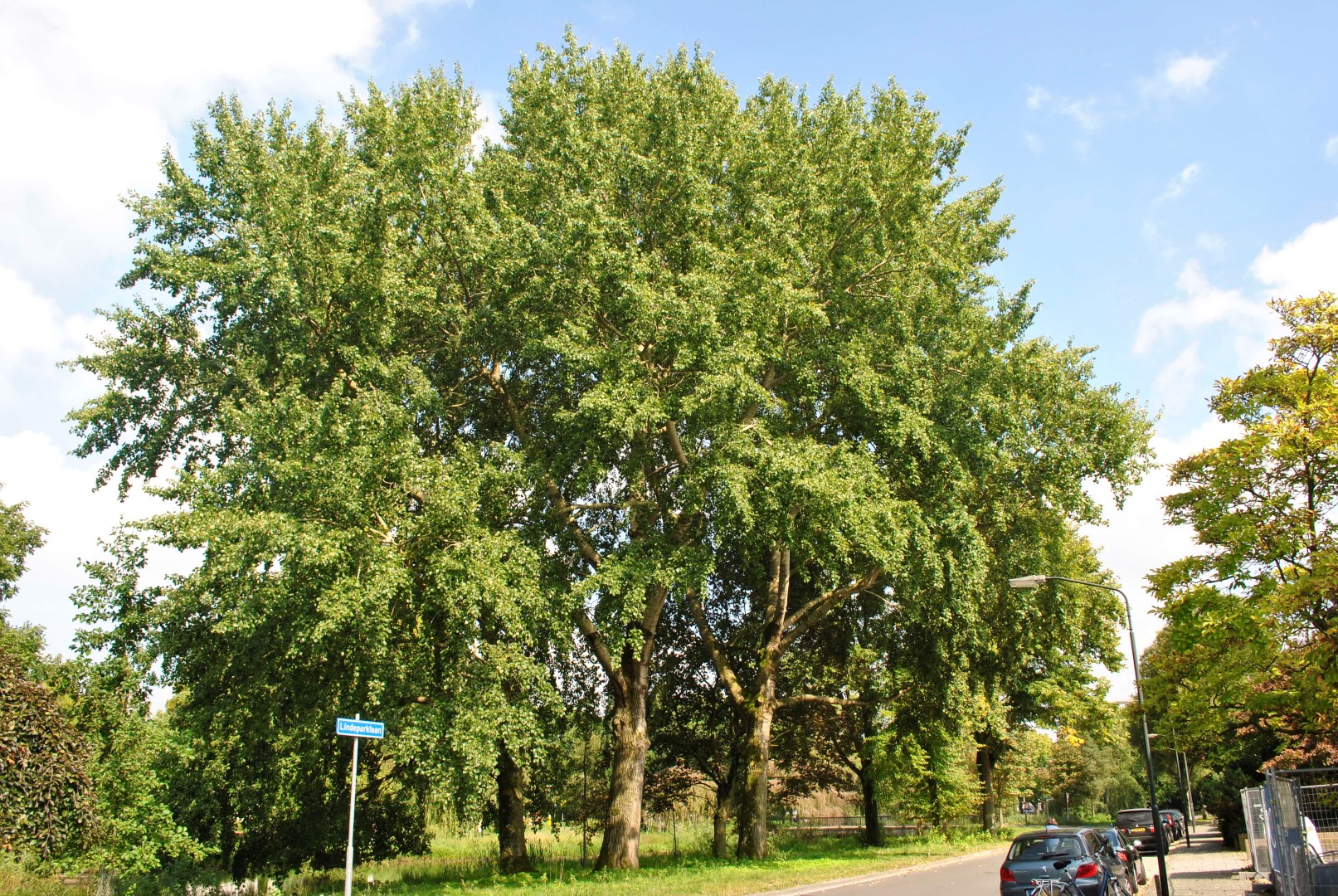
Populus ×canescens Peuplier grisard, Grisard Van den Berk Pépinières
Summary Bloom Color: Yellow. Main Bloom Time: Early spring, Late spring, Mid spring. Form: Oval. Physical Characteristics Populus x canescens is a deciduous Tree growing to 30 m (98ft) by 15 m (49ft) at a fast rate. See above for USDA hardiness. It is hardy to UK zone 4. It is in flower from February to March.

Canescens Del Populus X Del álamo Gris Árbol Con Los Ojos Foto de archivo Imagen de cruzado
Populus x canescens 'Macrophylla' is one of the Gardens most prominent champion trees! This giant popular hybrid has stood by our pond since 1970. Sometimes known as 'Picart's Popular', this is a larger leaf form of the common variety and a lot taller growing.
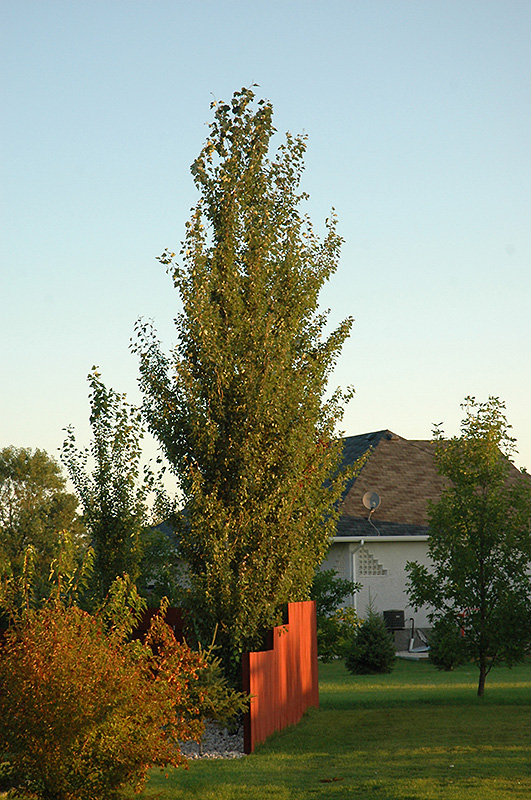
Tower Poplar (Populus x canescens 'Tower') in Ottawa Nepean Kanata Stittsville Gatineau Aylmer
Populus alba: Populus x canescens: Leaf size: Usually longer than 45 mm: Usually smaller, shorter than 40 mm: Leaf shape: 1-5 lobed and have more than 5 small, irregular, sharp, triangular teeth on each side. Lobes reduced to 4 or 5 coarse, broadly rounded teeth on each side. Underside of leaf

Populus x canescens 'Macrophylla' Stephen Reed Flickr
Botanical details Family Salicaceae Native to the UK No Potentially harmful Genus Populus Genus description Populus are deciduous trees, mostly very fast-growing and large, with male and female catkins on separate trees, opening before the leaves. Male catkins are the more ornamental, female ones can be a nuisance from the cottony, wind-blown seeds

Gray Poplar 'Tower' (Populus x canescens) My Garden Life
General Information. Populus x canescens is a deciduous tree that can grow up to 30.00 metres tall. It is harvested from the wild for local use as a medicine and source of materials..
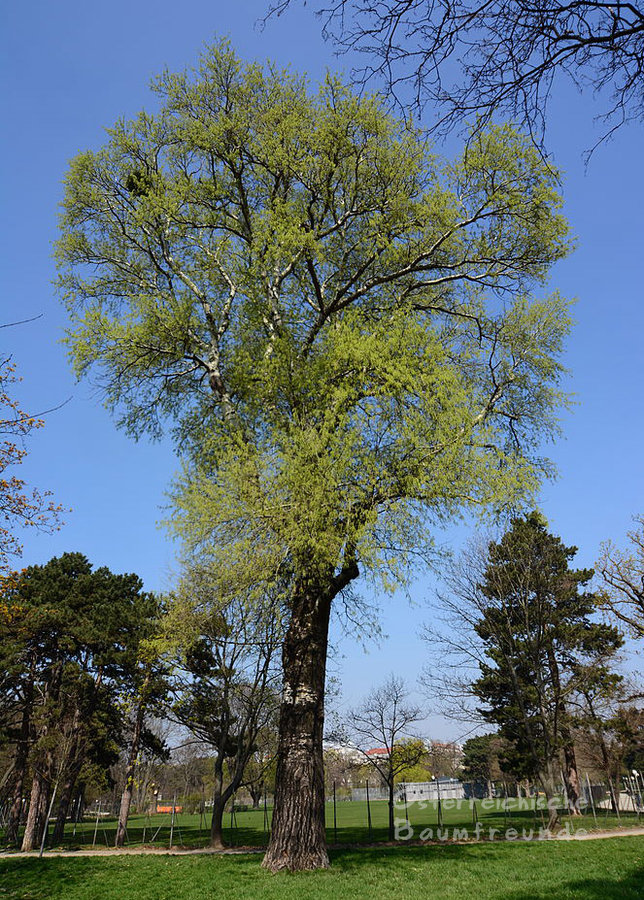
Graupappel Populus x canescens Österreichische Baumfreunde
Populus x canescens (grey poplar) Grey poplar. Getty Images. Grey poplar is a hybrid between Populus alba (white poplar) and Populus tremula (aspen). Particularly vigorous in growth, it forms a substantial tree which is broadly columnar in shape, spreading with age. Glossy dark green leaves are woolly and grey beneath, similar in shape to those.

Populus x canescens09 The Tree Library Flickr
P. x canescens is suitable for landscaped areas and as a solitary in parks and belts of trees. Prefers moist nutritious soils but also grows in drier less nutritious soil. It cannot take peaty or acid soils. Stands up well to (sea) wind. Specifications Height: 20 - 25 m, fast growing Crown: oval to round, irregular, half-open crown

Grey poplar (Populus x canescens) underside of leaves May 2018 YouTube
Populus × canescens, the grey poplar, is a hybrid between Populus alba (white poplar) and Populus tremula (common aspen). It is intermediate between its parents, with a thin grey downy coating on the leaves, which are also much less deeply lobed than the leaves of P. albus.

Grey Poplar Populus x canescens (P. alba x tremula)
This is a very vigorous and handsome poplar, which produces suckers freely, and grows well on most soils, including chalky ones. It is used for shelter and, in some parts of the world, for checking soil-erosion. Most modern authorities consider P. canescens to be a hybrid between P. alba and P. tremula.

Graupappel Populus x canescens Österreichische Baumfreunde
description: The gray poplar is a hybrid of aspen and white poplar and is found in the temperate zones of the earth. Tree profile name botanical: Populus × canescens other name: Grey Poplar family: Willow family (Salicaceae) species: deciduous tree height: up to 30 m (99 ft) leaf: The leaves of Grey poplar are round to ovoid and slightly lobed.
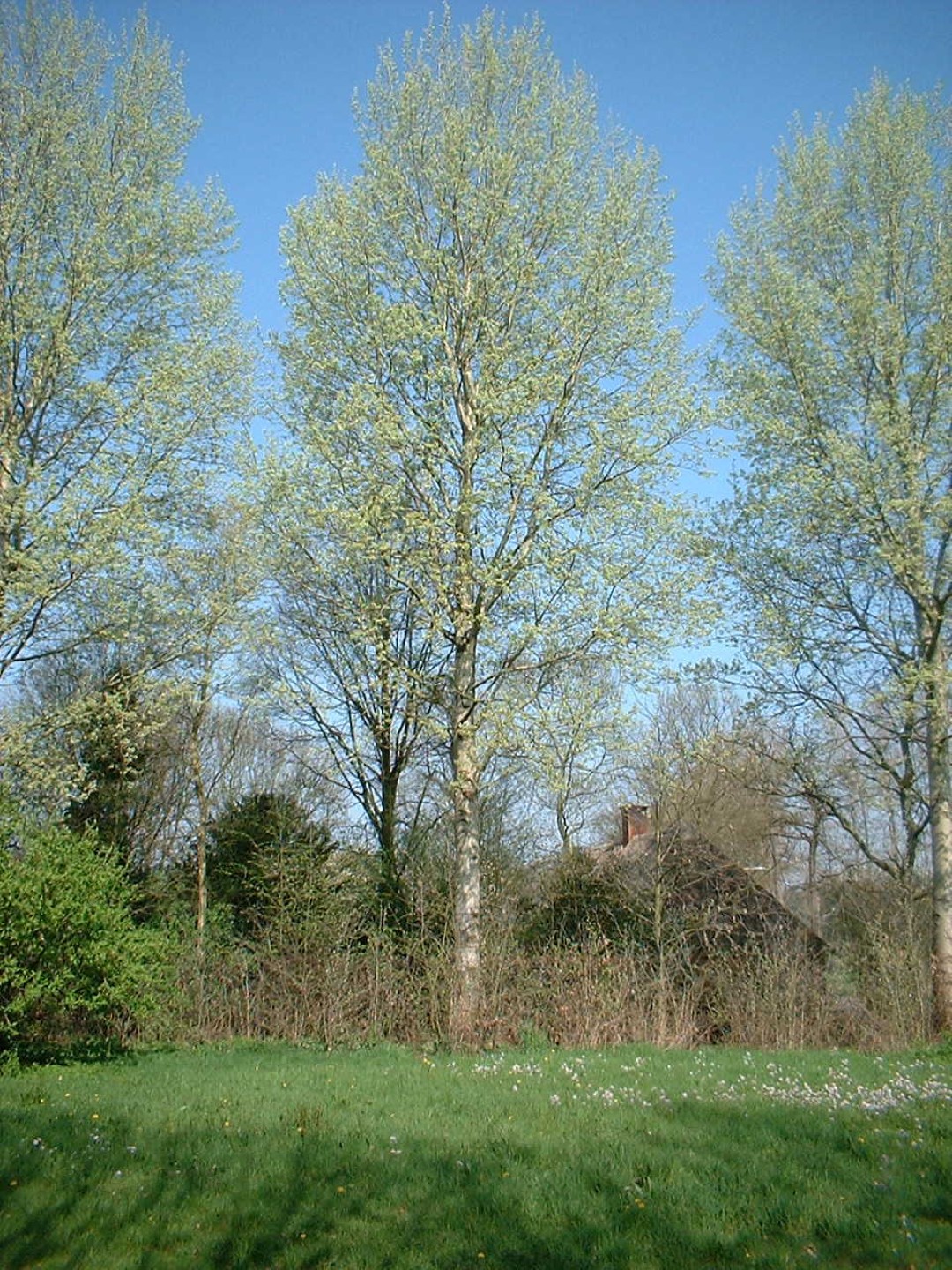
Populus ×canescens 'Schubu' Populus ×canescens 'Schubu' Van den Berk Baumschulen
P. x canescens is a spreading to broadly columnar, suckering, deciduous tree with pale grey bark, triangular to ovate, dark green leaves, grey-downy beneath. Shorter shoots bear oval to rounded leaves, light green beneath. Leaves turn red, orange, and yellow in autumn. Red catkins bloom on male trees in early spring. Green, female catkins are rarely produced.

Tree Populus x canescens Dương xám A tree lover blog!
Populus x canescens Description. A natural hybrid between White Poplar and Aspen, and rather variable but intermediate in character between the two. It exhibits 'hybrid vigour', and can outgrow both parent species, becoming a large tree to 40 metres or more. Shoots white downy at first..
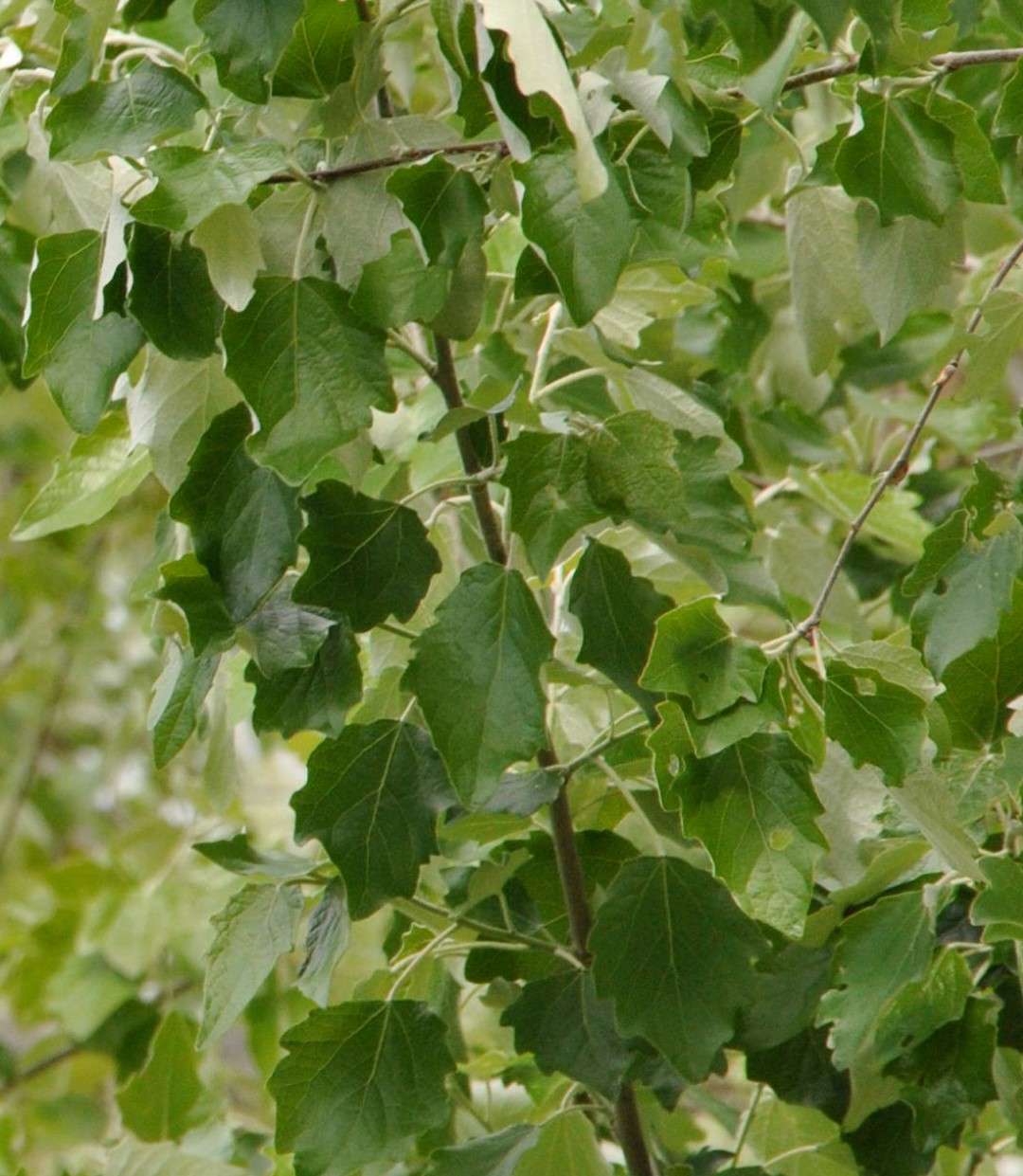
Populus ×canescens 'Honthorpa' Populus ×canescens 'Honthorpa' Pepinierele Van den Berk
Populus × canescens, the grey poplar, is a hybrid between Populus alba (white poplar) and P. tremula (common aspen). It is intermediate between its parents, with a thin grey downy coating on the leaves, which are much less deeply lobed than the leaves of P. alba.

Grey Poplar Populus x canescens (P. alba x tremula)
EPPO Code: POPCN. Preferred name: Populus x canescens. Authority: (Aiton) Smith. Notes. A natural hybrid between the European parent species (P. alba and P. tremula), found occasionally in the wild. This hybrid has been the basis for a selection and propagation programme which makes P. canescens the commonest plantation poplar in western Europe.
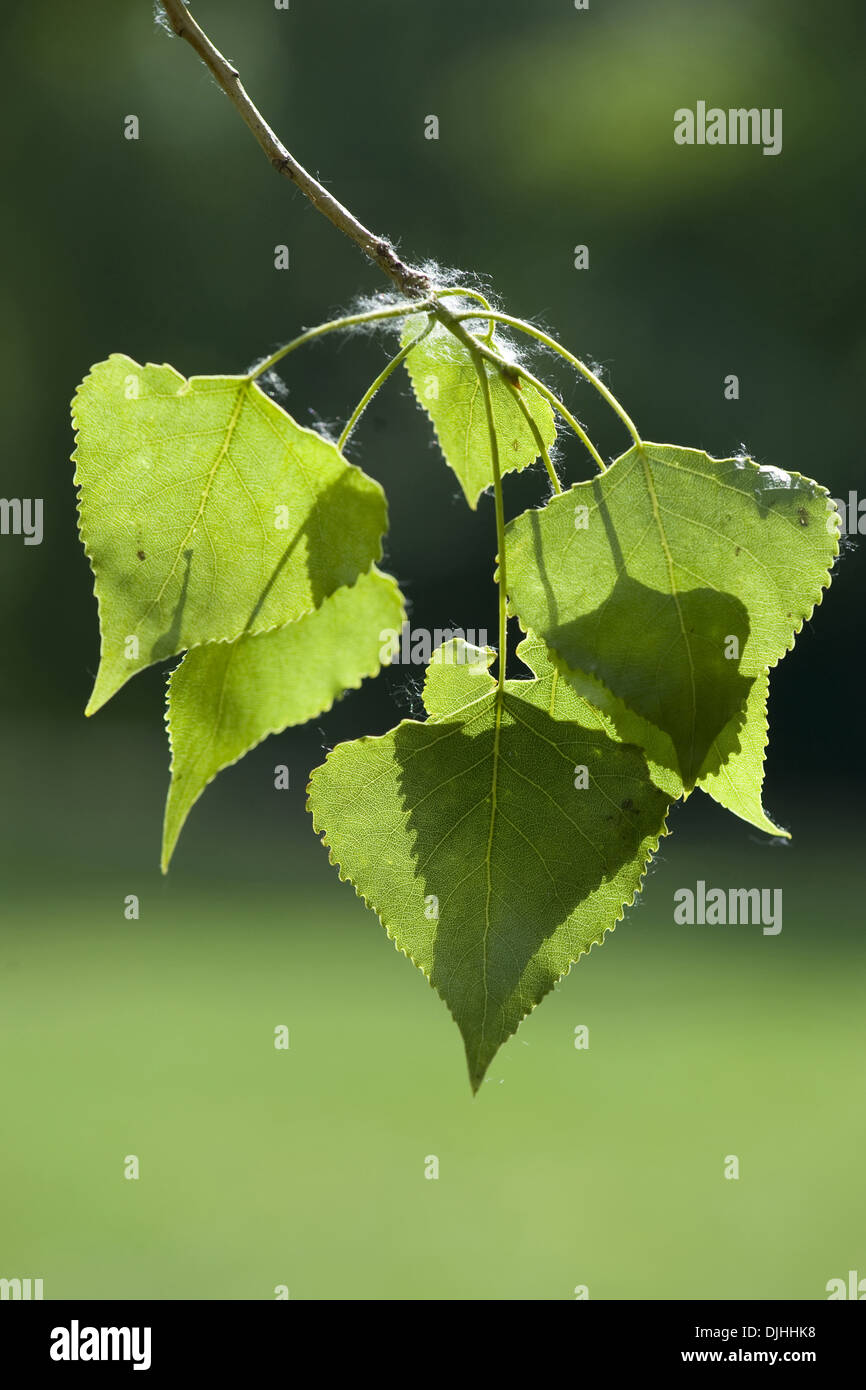
grey poplar, populus x canescens Stock Photo Alamy
Return the soil to the planting area packing it firmly around the root ball. Fill the hole until the soil line is just at the base of the plant, where the roots begin to flare out from the main stem. Water the plant well then add a 2" (5cm) layer of mulch, such as shredded bark, around the planting area. Keep the mulch at least 4" (10cm.